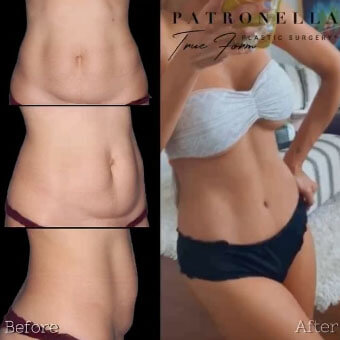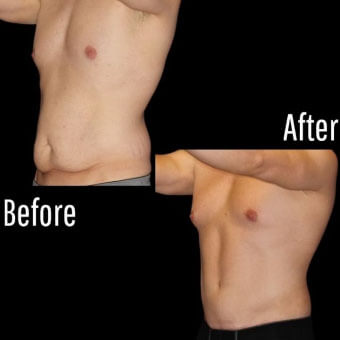Dr Patronella’s True Form Approach to Breast Surgery: The Art & Science of Creating Beautiful Breasts
Posted December 29, 2014 in Breast Augmentation, Breast Lift, Breast Revision
By Dr. Chris Patronella
Ultimately, the goals I strive to achieve through breast surgery procedures such as breast augmentation, breast lift, breast reduction, and breast revision surgery include the following:
- I want the breasts to appear as close to perfect as I can make them while recognizing that perfection is elusive.
- I want the breast fold to have definition.
- I want the breasts to have a soft outer curve while avoiding the potential pitfall of creating the appearance of breasts that spread out too much to the sides.
- I want the nipples to line up equally.
- I want the size of the breasts to be as equal as possible.
- I want the distance between the nipple and the fold to be equal on both sides.
- I want the breasts to appear to have the same width and projection.
Breast Augmention Considerations
One of the most popular cosmetic plastic surgery procedures women request, breast augmentation, is a seemingly simple procedure. However, in actuality, there are many individual characteristics of each patient that require attention in order to create attractive and natural-looking results. Oftentimes, the failure to identify and address any one of these individual characteristics can lead to dissatisfying surgical results.
Some of the anatomical features I evaluate during a patient’s consultation for breast augmentation surgery include:
1. Physical frame
A woman’s unique frame, stature, and build must be assessed to determine the range of implant sizes that will best fit her size.
2. The structure of the rib cage
Because the rib cage impacts the position and projection of the breasts upon the chest, any unusual or subtle asymmetries of the ribcage must be identified. Asymmetries of the chest wall (bone structure) will be magnified when an implant is placed.
3. The degree of separation between the breasts
Some women have breasts that are spaced far apart, while they are closer together for others. Implants must be placed under the breasts in their existing positions.
4. The thickness of the existing breast tissue
This factor influences both the size and type implant that is recommended. For those who have relatively little breast tissue, silicone breast implants generally deliver a more natural look and feel than saline implants.
5. Differences between the breasts
It is important to assess any differences between the breasts’ size, nipple position, and the amount of skin and tissue present on one side compared to the other.
6. Scoliosis signs
The curvature of the spine impacts the orientation of the ribs, which, as previously described, can affect the breasts’ position on the chest. This can cause one breast to tilt more in one direction, to project more prominently, or appear higher or lower on the chest than the other breast.
7. The levelness of the shoulders
This, too, can cause one breast to appear lower than the other.
The overwhelming majority of patients will have an asymmetry of one or more of these elements that can influence the overall appearance of the breasts. As part of the consultation, I first have to understand what a woman’s goals, vision, and expectations are, and then, during the evaluation, assess whether I can meet those goals and expectations based upon her unique physical features. As a surgeon, it’s incumbent upon me to recognize any asymmetries, determine if I can improve them, and assess any limitations in doing so. It’s my duty to help patients understand what those limitations are and to modify their goals and expectations accordingly in order to achieve the best results for each individual.
The Art of Breast Surgery
There are many things we can do to balance any perceptual differences in symmetry in order to attain the most ideal aesthetic outcome possible. This might involve adjusting the level of the inframammary fold (the breast crease) or varying the implant size or profile—the implant’s projection—that is used for one breast for the purpose of harmonizing its appearance with the other. That’s the art of breast augmentation surgery, and it’s the difference between results that appear artificially bolted-on and those that possess the natural soft and shapely fullness that have made breasts an enduring symbol of feminine beauty throughout the ages.







